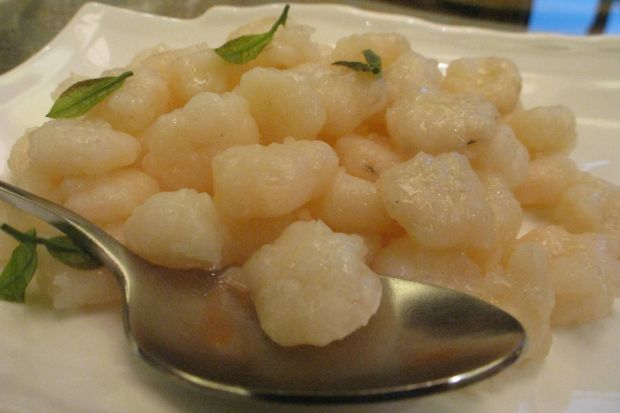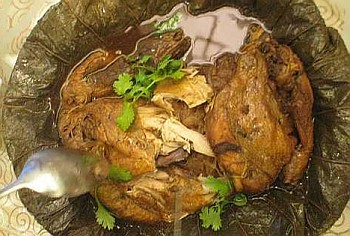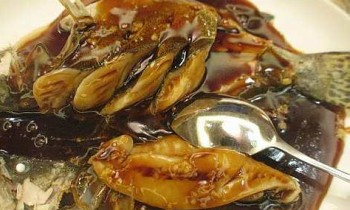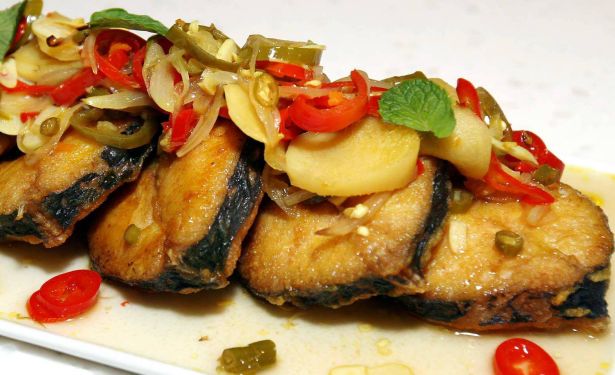The gastronomy of Hangzhou is as notable as the Chinese city’s scenery.
YOU would be surprised how many dishes originated from the beautiful ancient city, Hangzhou, in the central-eastern Chinese province of Zhejiang. I certainly was, during my recent sojourn there, when I was invited to dine at the elegant Shang Palace Chinese Restaurant in the Shangri-La Hotel.
Perched on the north shore overlooking the scenic West Lake, where its surrounding cultural landscape was awarded World Heritage Status by Unesco in June, the property was the first of the well-known chain to be built in the country.
My hosts were general manager Karl Karlsson and his lovely wife Zoe, not forgetting their little girl Anna. A familiar face at the dinner was Adam Roy from Penang’s Rasa Sayang Resort, who is now the executive chef of the hotel.
“Shang Palace is a Cantonese restaurant,” explained Roy, “which features some well-known local specialities as do most other Shang Palaces.” There are 19 alone in China, and 12 outside. Chef Xiao Liang Cai, who is in charge of Shang Palace operations, describes Hangzhou food as “very clear and straightforward, a little sweet but not greasy”.
The Shang Palace here is run by Chinese executive chef Cai Kang Rong, recognised as a “national senior chef” by the Provincial Authorities, who oversees the preparation of local cuisine. “The raw ingredients we get here are fresh and seasonal. Hangzhou food has changed a bit, although the tastes remain light and exquisite,” he said.
If, like me, you are used to more robust flavours and spicy Malaysian-style cooking, then you will find the food here gentler. But take a bit of time to savour the dishes, and you’ll start to enjoy the fresh, natural flavours of food that is not swamped by oil, chillies or spices. There is good reason why it’s known as one of the “Eight Great Cuisines of China”.
The cool, sunny region with ample annual rainfall is ideal for tea. Among the most famous is Long Jin (Dragon Well), of which the leaves are hand-picked when they are still young and tender then painstakingly “toasted” by hand over a low heat till they are dry but still green.
When brewed, these leaves result in a clear, delicate tea. They are also used in a unique Hangzhou dish, the “Long Jin Xiaren” (Crystal Shrimps with Long Jin Tea Leaves). The shelled shrimps are marinated in a dash of Shaoxing rice wine, then quickly stir-fried with the brewed tea leaves, resulting in translucent, crunchy prawns infused with a delicate, smoky flavour.
You’ve probably eaten Dongpo Pork, a square of belly braised in a sweet soya sauce with ginger, garlic, pepper and Shaoxing wine, that melts in your mouth. It was apparently inspired by the renowned Song Dynasty poet Su Dongpo. Here, it is served in small, individual casseroles, accompanied by fluffy steamed mantou (buns) with which to dip into the thick, delicious gravy.
Another popular Hangzhou dish is Beggar’s Chicken, so-called because legend has it that it was invented by an innovative thief who, upon finding that he had nowhere to cook the chicken he had stolen, wrapped it in clay and baked it in a hole in the ground. Of course, cooking methods have improved tremendously since, and the whole stuffed chicken is now baked in lotus leaves and clay, resulting in tender, aromatic meat with subtle herbal overtones.
We also tried two unique dishes: West Lake Shield Soup, which uses rare tender aquatic plants, also known as Water Sunflowers, harvested from the West Lake, apparently only one of three lakes in China which grows it. Cooked in a light chicken broth and served with shredded ham, the leaves have a particularly slimy texture which gives way to a slight crunch, a bit like frozen chendol, if you can imagine that. It’s not unpleasant, but could take some getting used to. It’s supposed to be rich in protein and vitamins.
The other was Cat’s Ears, a popular Hangzhou snack which is actually a noodle made in the shape of feline ears, hence the name. It’s cooked in a light broth with mushrooms, local vegetables and a light sprinkling of minced bacon. This delicacy supposedly gained fame when the 18th century Qing Dynasty emperor Qian Long took shelter from the heavy rain in a humble fisherman’s boat. He was starving, so the fisherman’s granddaughter cooked this for him.
By this time we were really quite full, but of course we had to try what is probably the most famous Hangzhou dish: the Xi Hu Cu Yi, West Lake Carp in Sweet Vinegar Sauce. The whole fresh water fish is halved lengthways and spread open, poached in gingered water then served with a thick, dark sauce made of soya sauce, sugar and vinegar. The tart, sweet gravy doesn’t overpower the white, flakey meat, but complements it well, although the philistine part of me thinks a slice or two of chilli padi would have given it even more oomph!
Shang Palace of Shangri-La Hangzhou is located at 78 Beishan Road, Hangzhou, Zhejiang Province, China (call +86-571-8797 7951 ext 21).
The writer blogs at www.helenong.com.







